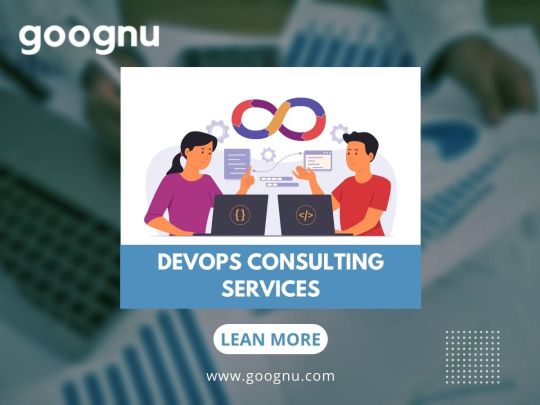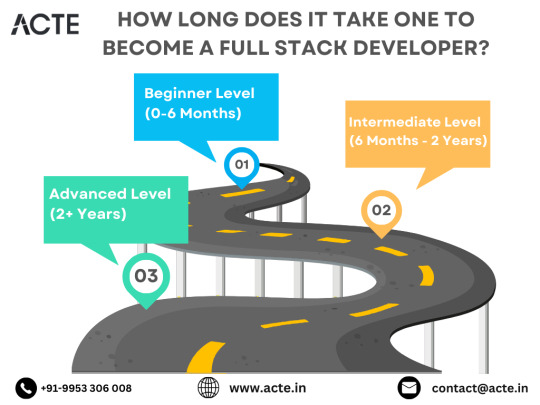#DevOps Implementation Strategies
Explore tagged Tumblr posts
Text
Streamline your workflows & boost efficiency with DevOps. Reach out to a DevOps consulting services provider today to accelerate your development processes.
#Cloud Technologies And Services#Benefits Of DevOps#DevOps Implementation Strategies#Software Development Processes#DevOps Practices
0 notes
Text
Streamline your workflows & boost efficiency with DevOps. Reach out to a DevOps consulting services provider today to accelerate your development processes.
#Cloud Technologies And Services#Benefits Of DevOps#DevOps Implementation Strategies#Software Development Processes#DevOps Practices
0 notes
Text
Streamline your workflows & boost efficiency with DevOps. Reach out to a DevOps consulting services provider today to accelerate your development processes.
#Cloud Technologies And Services#Benefits Of DevOps#DevOps Implementation Strategies#Software Development Processes#DevOps Practices
0 notes
Text
Streamline your workflows & boost efficiency with DevOps. Reach out to a DevOps consulting services provider today to accelerate your development processes.
#Cloud Technologies And Services#Benefits Of DevOps#DevOps Implementation Strategies#Software Development Processes#DevOps Practices
0 notes
Text
Streamline your workflows & boost efficiency with DevOps. Reach out to a DevOps consulting services provider today to accelerate your development processes.
#Cloud Technologies And Services#Benefits Of DevOps#DevOps Implementation Strategies#Software Development Processes#DevOps Practices
0 notes
Text
Streamline your workflows & boost efficiency with DevOps. Reach out to a DevOps consulting services provider today to accelerate your development processes.
#Cloud Technologies And Services#Benefits Of DevOps#DevOps Implementation Strategies#Software Development Processes#DevOps Practices
0 notes
Text
Streamline your workflows & boost efficiency with DevOps. Reach out to a DevOps consulting services provider today to accelerate your development processes.
#Cloud Technologies And Services#Benefits Of DevOps#DevOps Implementation Strategies#Software Development Processes#DevOps Practices
0 notes
Text
#DevOps Consulting Services#DevOps Implementation Services#Steps of DevOps Implementation#Strategies of DevOps Implementation#Successful DevOps implementation
0 notes
Text
Challenges of DevOps Implementation - how to solve them
Nowadays, major companies are trying to implement DevOps strategies for their companies. Which is a positive thing. DevOps makes your applications faster and more efficient. However, companies lack the proper know-how in the implementation of DevOps. Lack of knowledge often leads to improper and poor results. In our previous blog, we learned what is the best strategy to implement DevOps. While implementing a DevOps strategy it is natural to face challenges. Every company is unique on its own and so are the challenges it faces. In this blog, we will discuss the common challenges of DevOps implementation and how can you solve them.
continue to reading:
#DevOps implementation#best strategy to implement devops#devops strategy#challenges of devops implementation
1 note
·
View note
Text

Streamline Your Software Delivery with Expert DevOps Consulting Services
Goognu offers comprehensive DevOps consulting services to help businesses optimize their software delivery processes and achieve faster, more reliable deployments. Our team of experienced DevOps consultants works closely with your organization to assess your existing infrastructure, identify bottlenecks, and design tailored solutions that align with your business goals.
0 notes
Text
Uncover the revolutionary synergy between AI and DevOps infrastructure in this in-depth analysis. Explore transformative insights for unparalleled efficiency. Dive into the future of seamless collaboration!
#AI Integration Into DevOps Methodologies#AI Into DevOps Infrastructure#AI Into DevOps Techniques#AI-Driven Analytics#DevOps Infrastructure#DevOps Methodologies#DevOps Practices#DevOps Strategies#Future Of AI-Driven DevOps#Implementing AI In DevOps#Software Development Landscape
0 notes
Text
Uncover the evolution of DevOps with AI's transformative touch. Dive deep into a comprehensive analysis, unlocking the future of agile infrastructure. Engage with innovation in every byte!
#AI Integration Into DevOps Methodologies#AI Into DevOps Infrastructure#AI Into DevOps Techniques#AI-Driven Analytics#DevOps Infrastructure#DevOps Methodologies#DevOps Practices#DevOps Strategies#Future Of AI-Driven DevOps#Implementing AI In DevOps#Software Development Landscape
0 notes
Text
Explore the transformative synergy of AI and DevOps, driving innovation and efficiency in software development. Unleash the power of intelligent automation.
#AI Integration Into DevOps Methodologies#AI Into DevOps Infrastructure#AI Into DevOps Techniques#AI-Driven Analytics#DevOps Infrastructure#DevOps Methodologies#DevOps Practices#DevOps Strategies#Future Of AI-Driven DevOps#Implementing AI In DevOps#Software Development Landscape
0 notes
Text
Explore the transformative synergy of AI and DevOps, driving innovation and efficiency in software development. Unleash the power of intelligent automation.
#AI Integration Into DevOps Methodologies#AI Into DevOps Infrastructure#AI Into DevOps Techniques#AI-Driven Analytics#DevOps Infrastructure#DevOps Methodologies#DevOps Practices#DevOps Strategies#Future Of AI-Driven DevOps#Implementing AI In DevOps#Software Development Landscape
0 notes
Text
The Roadmap to Full Stack Developer Proficiency: A Comprehensive Guide
Embarking on the journey to becoming a full stack developer is an exhilarating endeavor filled with growth and challenges. Whether you're taking your first steps or seeking to elevate your skills, understanding the path ahead is crucial. In this detailed roadmap, we'll outline the stages of mastering full stack development, exploring essential milestones, competencies, and strategies to guide you through this enriching career journey.

Beginning the Journey: Novice Phase (0-6 Months)
As a novice, you're entering the realm of programming with a fresh perspective and eagerness to learn. This initial phase sets the groundwork for your progression as a full stack developer.
Grasping Programming Fundamentals:
Your journey commences with grasping the foundational elements of programming languages like HTML, CSS, and JavaScript. These are the cornerstone of web development and are essential for crafting dynamic and interactive web applications.
Familiarizing with Basic Data Structures and Algorithms:
To develop proficiency in programming, understanding fundamental data structures such as arrays, objects, and linked lists, along with algorithms like sorting and searching, is imperative. These concepts form the backbone of problem-solving in software development.
Exploring Essential Web Development Concepts:
During this phase, you'll delve into crucial web development concepts like client-server architecture, HTTP protocol, and the Document Object Model (DOM). Acquiring insights into the underlying mechanisms of web applications lays a strong foundation for tackling more intricate projects.
Advancing Forward: Intermediate Stage (6 Months - 2 Years)
As you progress beyond the basics, you'll transition into the intermediate stage, where you'll deepen your understanding and skills across various facets of full stack development.

Venturing into Backend Development:
In the intermediate stage, you'll venture into backend development, honing your proficiency in server-side languages like Node.js, Python, or Java. Here, you'll learn to construct robust server-side applications, manage data storage and retrieval, and implement authentication and authorization mechanisms.
Mastering Database Management:
A pivotal aspect of backend development is comprehending databases. You'll delve into relational databases like MySQL and PostgreSQL, as well as NoSQL databases like MongoDB. Proficiency in database management systems and design principles enables the creation of scalable and efficient applications.
Exploring Frontend Frameworks and Libraries:
In addition to backend development, you'll deepen your expertise in frontend technologies. You'll explore prominent frameworks and libraries such as React, Angular, or Vue.js, streamlining the creation of interactive and responsive user interfaces.
Learning Version Control with Git:
Version control is indispensable for collaborative software development. During this phase, you'll familiarize yourself with Git, a distributed version control system, to manage your codebase, track changes, and collaborate effectively with fellow developers.
Achieving Mastery: Advanced Phase (2+ Years)
As you ascend in your journey, you'll enter the advanced phase of full stack development, where you'll refine your skills, tackle intricate challenges, and delve into specialized domains of interest.
Designing Scalable Systems:
In the advanced stage, focus shifts to designing scalable systems capable of managing substantial volumes of traffic and data. You'll explore design patterns, scalability methodologies, and cloud computing platforms like AWS, Azure, or Google Cloud.
Embracing DevOps Practices:
DevOps practices play a pivotal role in contemporary software development. You'll delve into continuous integration and continuous deployment (CI/CD) pipelines, infrastructure as code (IaC), and containerization technologies such as Docker and Kubernetes.
Specializing in Niche Areas:
With experience, you may opt to specialize in specific domains of full stack development, whether it's frontend or backend development, mobile app development, or DevOps. Specialization enables you to deepen your expertise and pursue career avenues aligned with your passions and strengths.
Conclusion:
Becoming a proficient full stack developer is a transformative journey that demands dedication, resilience, and perpetual learning. By following the roadmap outlined in this guide and maintaining a curious and adaptable mindset, you'll navigate the complexities and opportunities inherent in the realm of full stack development. Remember, mastery isn't merely about acquiring technical skills but also about fostering collaboration, embracing innovation, and contributing meaningfully to the ever-evolving landscape of technology.
#full stack developer#education#information#full stack web development#front end development#frameworks#web development#backend#full stack developer course#technology
9 notes
·
View notes
Text
What are the latest trends in the IT job market?

Introduction
The IT job market is changing quickly. This change is because of new technology, different employer needs, and more remote work.
For jobseekers, understanding these trends is crucial to positioning themselves as strong candidates in a highly competitive landscape.
This blog looks at the current IT job market. It offers insights into job trends and opportunities. You will also find practical strategies to improve your chances of getting your desired role.
Whether you’re in the midst of a job search or considering a career change, this guide will help you navigate the complexities of the job hunting process and secure employment in today’s market.
Section 1: Understanding the Current IT Job Market
Recent Trends in the IT Job Market
The IT sector is booming, with consistent demand for skilled professionals in various domains such as cybersecurity, cloud computing, and data science.
The COVID-19 pandemic accelerated the shift to remote work, further expanding the demand for IT roles that support this transformation.
Employers are increasingly looking for candidates with expertise in AI, machine learning, and DevOps as these technologies drive business innovation.
According to industry reports, job opportunities in IT will continue to grow, with the most substantial demand focused on software development, data analysis, and cloud architecture.
It’s essential for jobseekers to stay updated on these trends to remain competitive and tailor their skills to current market needs.
Recruitment efforts have also become more digitized, with many companies adopting virtual hiring processes and online job fairs.
This creates both challenges and opportunities for job seekers to showcase their talents and secure interviews through online platforms.
NOTE: Visit Now
Remote Work and IT
The surge in remote work opportunities has transformed the job market. Many IT companies now offer fully remote or hybrid roles, which appeal to professionals seeking greater flexibility.
While remote work has increased access to job opportunities, it has also intensified competition, as companies can now hire from a global talent pool.
Section 2: Choosing the Right Keywords for Your IT Resume
Keyword Optimization: Why It Matters
With more employers using Applicant Tracking Systems (ATS) to screen resumes, it’s essential for jobseekers to optimize their resumes with relevant keywords.
These systems scan resumes for specific words related to the job description and only advance the most relevant applications.
To increase the chances of your resume making it through the initial screening, jobseekers must identify and incorporate the right keywords into their resumes.
When searching for jobs in IT, it’s important to tailor your resume for specific job titles and responsibilities. Keywords like “software engineer,” “cloud computing,” “data security,” and “DevOps” can make a huge difference.
By strategically using keywords that reflect your skills, experience, and the job requirements, you enhance your resume’s visibility to hiring managers and recruitment software.
Step-by-Step Keyword Selection Process
Analyze Job Descriptions: Look at several job postings for roles you’re interested in and identify recurring terms.
Incorporate Specific Terms: Include technical terms related to your field (e.g., Python, Kubernetes, cloud infrastructure).
Use Action Verbs: Keywords like “developed,” “designed,” or “implemented” help demonstrate your experience in a tangible way.
Test Your Resume: Use online tools to see how well your resume aligns with specific job postings and make adjustments as necessary.
Section 3: Customizing Your Resume for Each Job Application
Why Customization is Key
One size does not fit all when it comes to resumes, especially in the IT industry. Jobseekers who customize their resumes for each job application are more likely to catch the attention of recruiters. Tailoring your resume allows you to emphasize the specific skills and experiences that align with the job description, making you a stronger candidate. Employers want to see that you’ve taken the time to understand their needs and that your expertise matches what they are looking for.
Key Areas to Customize:
Summary Section: Write a targeted summary that highlights your qualifications and goals in relation to the specific job you’re applying for.
Skills Section: Highlight the most relevant skills for the position, paying close attention to the technical requirements listed in the job posting.
Experience Section: Adjust your work experience descriptions to emphasize the accomplishments and projects that are most relevant to the job.
Education & Certifications: If certain qualifications or certifications are required, make sure they are easy to spot on your resume.
NOTE: Read More
Section 4: Reviewing and Testing Your Optimized Resume
Proofreading for Perfection
Before submitting your resume, it’s critical to review it for accuracy, clarity, and relevance. Spelling mistakes, grammatical errors, or outdated information can reflect poorly on your professionalism.
Additionally, make sure your resume is easy to read and visually organized, with clear headings and bullet points. If possible, ask a peer or mentor in the IT field to review your resume for content accuracy and feedback.
Testing Your Resume with ATS Tools
After making your resume keyword-optimized, test it using online tools that simulate ATS systems. This allows you to see how well your resume aligns with specific job descriptions and identify areas for improvement.
Many tools will give you a match score, showing you how likely your resume is to pass an ATS scan. From here, you can fine-tune your resume to increase its chances of making it to the recruiter’s desk.
Section 5: Trends Shaping the Future of IT Recruitment
Embracing Digital Recruitment
Recruiting has undergone a significant shift towards digital platforms, with job fairs, interviews, and onboarding now frequently taking place online.
This transition means that jobseekers must be comfortable navigating virtual job fairs, remote interviews, and online assessments.
As IT jobs increasingly allow remote work, companies are also using technology-driven recruitment tools like AI for screening candidates.
Jobseekers should also leverage platforms like LinkedIn to increase visibility in the recruitment space. Keeping your LinkedIn profile updated, networking with industry professionals, and engaging in online discussions can all boost your chances of being noticed by recruiters.
Furthermore, participating in virtual job fairs or IT recruitment events provides direct access to recruiters and HR professionals, enhancing your job hunt.
FAQs
1. How important are keywords in IT resumes?
Keywords are essential in IT resumes because they ensure your resume passes through Applicant Tracking Systems (ATS), which scans resumes for specific terms related to the job. Without the right keywords, your resume may not reach a human recruiter.
2. How often should I update my resume?
It’s a good idea to update your resume regularly, especially when you gain new skills or experience. Also, customize it for every job application to ensure it aligns with the job’s specific requirements.
3. What are the most in-demand IT jobs?
Some of the most in-demand IT jobs include software developers, cloud engineers, cybersecurity analysts, data scientists, and DevOps engineers.
4. How can I stand out in the current IT job market?
To stand out, jobseekers should focus on tailoring their resumes, building strong online profiles, networking, and keeping up-to-date with industry trends. Participation in online forums, attending webinars, and earning industry-relevant certifications can also enhance visibility.
Conclusion
The IT job market continues to offer exciting opportunities for jobseekers, driven by technological innovations and changing work patterns.
By staying informed about current trends, customizing your resume, using keywords effectively, and testing your optimized resume, you can improve your job search success.
Whether you are new to the IT field or an experienced professional, leveraging these strategies will help you navigate the competitive landscape and secure a job that aligns with your career goals.
NOTE: Contact Us
2 notes
·
View notes